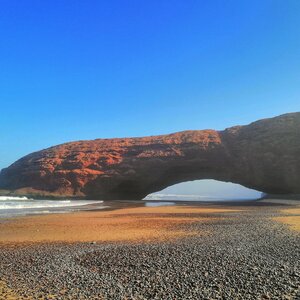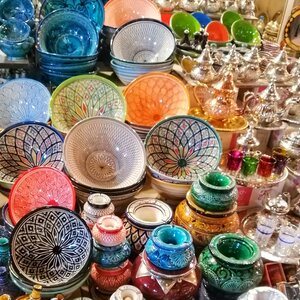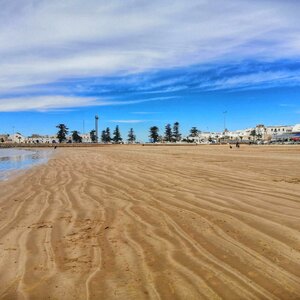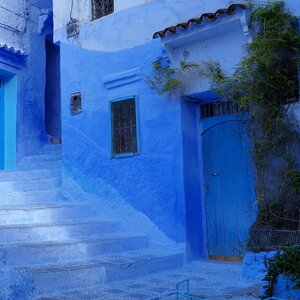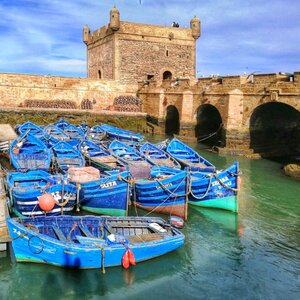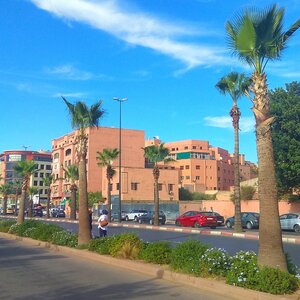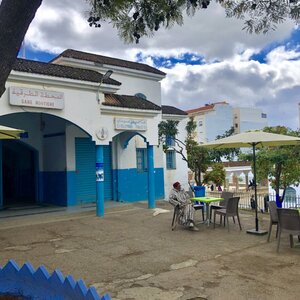It was in the tannery district that the action of the popular TV series «Clone» unfolded: according to the plot, Uncle Ali’s riad was located somewhere here, and Jady ran among these dyes. In fact, the shooting took place in a specially built artificial movie town in Brazil, but romantic tourists come and go here, looking for the very places they saw on the screen.
How to get to beautiful Fez
Today, there are three traditional dyehouses operating in Fez:
- The largest and most famous is the Tanneries Chouara (Tanneries Chouara), founded in the 11th century,
- The oldest are the dyehouses of Sidi Moussa (Sidi Moussa),
- The newest and smallest of the three are the dyehouses of Ain Azliten (Ain Azliten).
All three dye houses are on the map of Fez:
People often say that the dyehouses are difficult to find on your own. To get to Tanneries Chouara (you want to see the biggest dyeworks, right?), go straight down Rue Talaa Kebra from the Blue Gate (Bab Bou Jeloud) to the end, until you come to the square with the Al-Qaraouine University Library. Turn down the narrowest and dirtiest alley and it will lead you straight to the leather quarter.
Your sense of smell is the first thing that will tell you that you have entered the tannery district. At first you will not understand what the unusual odor is in the air. But once you have seen the dyeworks with your own eyes and smelled them right under your nose, you will never mistake them for anything else. In winter and spring, as long as it is cool, the smell is tolerable. How it all smells in summer, in the heat — I don’t want to imagine.
Tanneries Chouara.
Every tourist strives to get to the Shuar dyehouses. Their restoration took only a couple of years, but for many travelers it was almost the main disappointment: they have been to Fez and seen the dyehouses, but «not the same». Now Shuara is open again. It is possible to enter the dyehouses themselves only with a guide and for a fee (unofficial), but to look from above is free of charge.
The main sign of the dye houses, apart from their smell, is the concentration of young cheerful guys offering to escort you to «the best terrace, with the best view of the dye houses». For free, of course. Or rather, for a tip. In fact, you can get up to any terrace without tips.
The guidebooks recommend the terrace of the store with the inconspicuous sign «Terrace view No. 10». It really doesn’t cost anything to get up there, and it differs from the other sites in that there are no solicitors in front of it. But already on the terrace you will be breathing down the neck of an unpleasant large man, demanding to pay 20 dirhams for each camera (phones are also considered cameras). He won’t back down and he won’t leave. So if your goal is to take a photo and you don’t want to pay, either choose another terrace or take a photo quickly before he’s even close by. The view is not bad, although perhaps not the most impressive: here we were alone, while on the terrace opposite with beautiful wooden windows there was a whole group of tourists.
The bravest of the brave go down to the dyehouses. They say that the stench there is unbelievable: a breeze blows the stench from above, while downstairs it’s all there, in full force, and mint leaves don’t help. According to reviews, the workers of the dyehouses are not happy with visitors and do not hide it: they look unfriendly, may «accidentally» splash stinking sludge on their feet or splash paint.
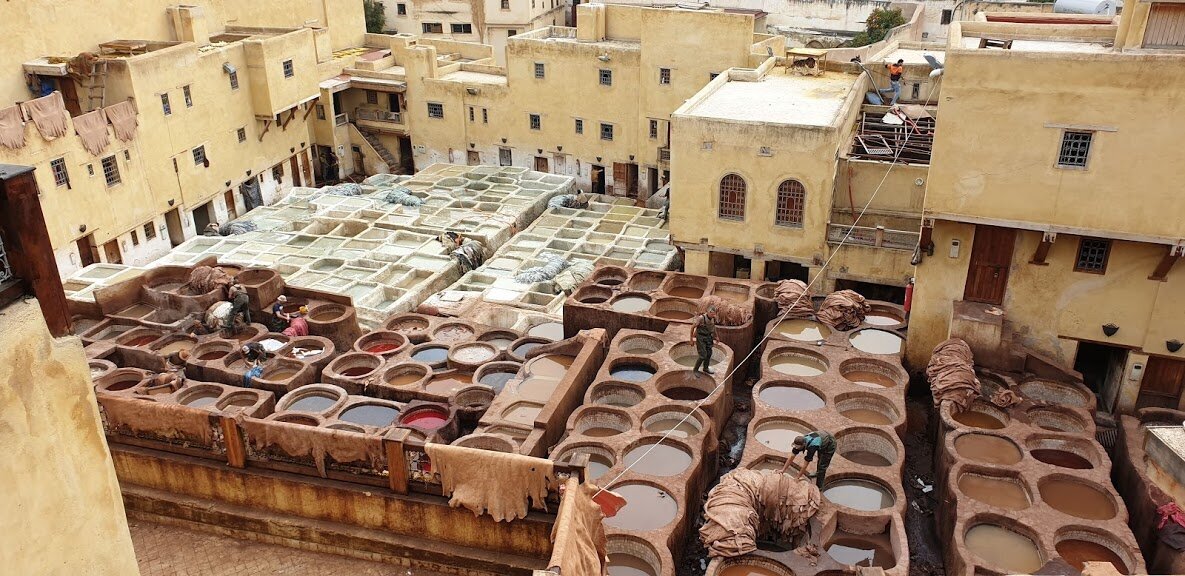
How leather is dyed in the dyehouses of Fez.
The Dyehouses of Fez are a cooperative that has employed 5 hundred workers for a thousand years. The work is difficult, physically exhausting, and the fumes of decomposing corpses are hardly good for them, but these men hold on to their places and pass them on. Unlike many other families, they have job security.
From above, the dyehouses look like a watercolorist’s palette: they are many, many stone vessels with paint and white liquid. In the white vats the skins are prepared for dyeing: the slurry consists of a mixture of cow urine, pigeon droppings, quicklime, salt and water. This step softens the tough skin, breaks down residual fat, flesh and wool, and makes the hides more malleable, preparing them for dyeing. It even sounds stinky — and the workers process the hides by hand.
In colored vats, the skins are dyed: yellow is obtained from a mixture of saffron and pomegranate, red from paprika and poppy, green from mint, blue from indigo, orange from henna, and brown from cedar wood. The finished skins are dried in the sun. Stretched out around the perimeter of the skins, they don’t look so scary anymore. You can already imagine that this yellow hide will be used to make a handbag or slippers (babushi)… And it seems that it should not stink anymore.
What’s interesting is that the stores around the dye houses really don’t stink anymore. It even smells pleasantly of fresh natural leather, like the interior of a good car. But if you smell the same products in the street shops, the smell — uninterrupted, unforgettable, and impossible to confuse with anything else — is right there. Is it possible that Moroccan stores use flavorings to drown out the smell? Who knows?
Is it worth buying leather goods in Morocco?
The leather goods in Fez are said to be of quite high quality. All guides and guidebooks, followed by travelers who have bought leather goods there, say what wonderful things the tanners of Fez make and how the highest quality products are exported all over the world.
Seeing this manual labor and knowing that the full cycle of processing each hide takes between 2 and 4 weeks, it is hard to believe. Perhaps Moroccan leather is indeed exported, but it is unlikely that the fully handmade tanneries of Fez have a significant share in these exports. Too little leather they have to produce, and too many leather goods are sold in Fez itself and the rest of the Moroccan cities.
I was planning on bringing back a leather souvenir from Morocco. A backpack, slippers, or at least a purse. But a visit to the dyehouses immediately discouraged this desire. The smell of dyes is everywhere, haunting even in other cities, and the finished products seem to smell a mile away, and it will be impossible to eradicate it. I saw this odor for about a month.
The quality of products is absolutely unstable. You may find a pair of ballet flats of cheerful summer color for 100 dirhams, or a handbag made of unevenly colored, different thickness leather for 200—400 dirhams. From such prices haggling starts in the medina shops, and the final price depends on your talent to negotiate. In the stores around the dyes themselves, everything will cost more — it’s a surcharge for the view from the terrace and a decent interior inside the store.


